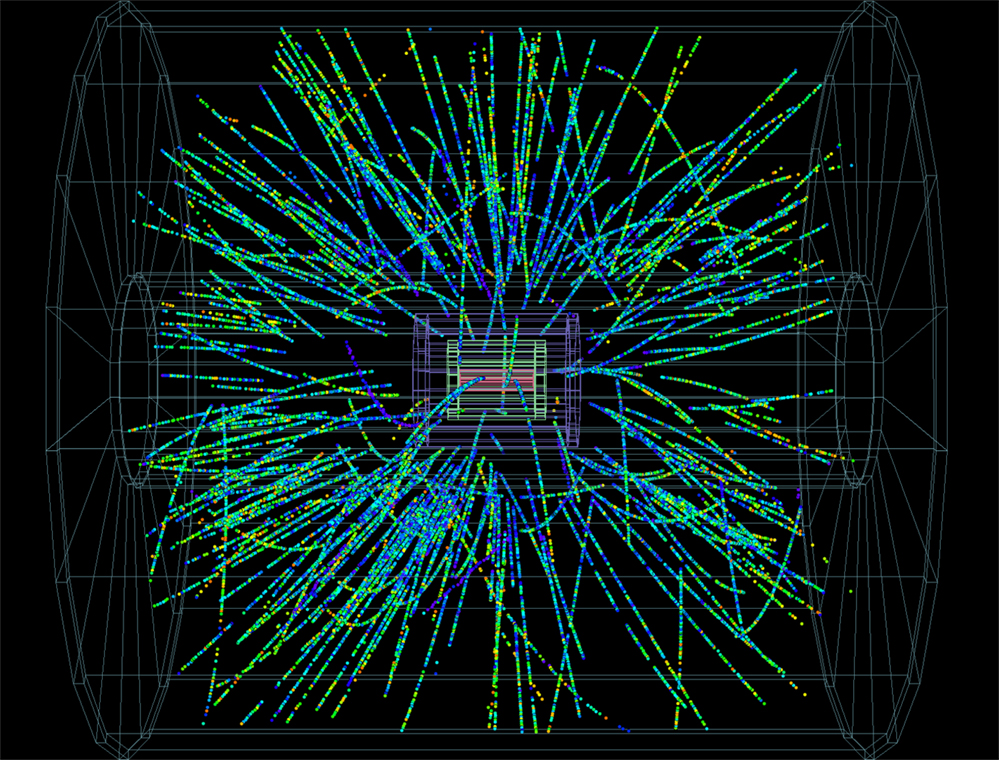
“Because time travel is limited to these special particles, it is not possible for a man to travel back in time and murder one of his parents before he himself is born, for example. “One of the attractive things about this approach to time travel is that it avoids all the big paradoxes,” Weiler said. If the collider succeeds in producing the Higgs boson, some scientists predict that it will create a second particle, called the Higgs singlet, at the same time.Īccording to Weiler and Ho’s theory, these singlets should have the ability to jump into an extra, fifth dimension where they can move either forward or backward in time and reappear in the future or past.


One of the major goals of the collider is to find the elusive Higgs boson: the particle that physicists invoke to explain why particles like protons, neutrons and electrons have mass. “Our theory is a long shot,” admitted Weiler, who is a physics professor at Vanderbilt University, “but it doesn’t violate any laws of physics or experimental constraints.” If the latest theory of Tom Weiler and Chui Man Ho is right, the Large Hadron Collider – the world’s largest atom smasher that started regular operation last year – could be the first machine capable of causing matter to travel backwards in time. Thomas Weiler, right, and graduate fellow Chui Man Ho (John Russell / Vanderbilt)

"This is a machine for the world and by the world: not a Chinese one," he added, saying physicists from around the globe had travelled to China to help with the project.Prof. He suggested Qinhuangdao, a northern port city that is the starting point of the Great Wall, as an ideal location for the underground facility, noting its favourable geological conditions and local wineries as important selling points.Ĭhina's rapid economic growth and large population put it in a unique position to invest in basic scientific research, he wrote. Planning for the Chinese project began in 2013, shortly after the 2012 discovery of the Higgs boson, according to slides from a presentation by Wang in Geneva that appeared on his institute's website.
#HIGGS BOSON SUPERCOLLIDER UPGRADE#
More than 230 scientists and engineers from around the world met at CERN this week to discuss the project, which would be operational from 2025, the organisation said on its website.ĬERN said its upgrade would allow its giant lab - a 27-kilometre (17-mile) ring-shaped tunnel straddling the French-Swiss border - to produce 15 million Higgs boson particles per year, compared to the 1.2 million it generated in total between 20.Īt a time when austerity measures have led many developed nations to reduce research funding for projects without clear applications, China has been pouring huge sums money into theoretical as well as practical science, hoping to become a world leader in fields from biology to cosmology. "The High-Luminosity LHC will produce collisions 10 times more rapidly, increasing our discovery potential and transforming the LHC into a machine for precision studies: the natural next step for the high-energy frontier," he insisted.

"The LHC already delivers proton collisions at the highest energy ever," CERN chief Rolf Heuer said in a statement. It said it aimed for a tenfold increase by 2025 in the "luminosity" of the LHC, meaning the rate of particle collisisons that the machine can generate. "It seems not possible to escalate the energy dramatically at the existing facility."ĬERN was quick to point to its own plans for a major upgrade to the LHC. "(The) LHC is hitting its limits of energy level," Wang told the China Daily, which is published by the government. The facility is expected to generate millions of Higgs bosons, far more than the current capacity of CERN's Large Hadron Collider (LHC), where the particle was uncovered in 2012.Īs planned, the Chinese project will generate seven times the energy of the LHC, smashing sub-atomic particles together to generate "Higgses" on an unprecedented scale.


 0 kommentar(er)
0 kommentar(er)
